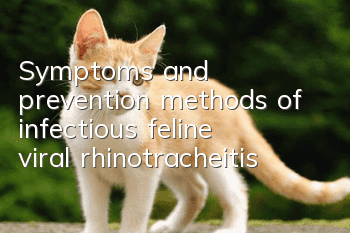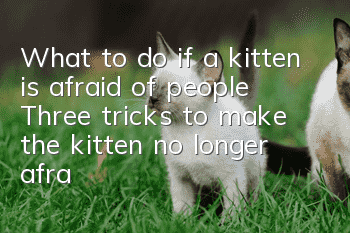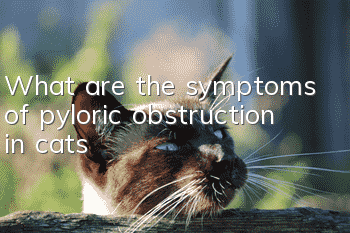Symptoms and prevention methods of infectious feline viral rhinotracheitis

Parents should also understand the knowledge about cat health when raising cats, because this will be more conducive to the growth of cats, and they will not know how to deal with diseases when cats encounter diseases, so cats in daily life Some common diseases and symptoms of disease attacks are what we, as qualified parents, need to know. Below, the editor will also introduce to you a common infectious disease in cats’ lives. Parents, Preventive measures can be taken in advance when the disease occurs in Jiandong.
Symptoms of feline viral rhinotracheitis
The main areas where the virus grows and invades are the nose, sinuses, eyes, palate, tongue, throat, tonsils and upper trachea. Cats will develop severe sneezing symptoms 1 to 3 days after being infected, and then gradually become lethargic, have a fever, have a severe loss of appetite, and even stop eating. The nose will initially run clear, like when a person has a cold. The same, and then gradually the nasal discharge becomes thicker and thicker like snot; tears flow, and the conjunctiva (i.e., the white of the eye) becomes red and swollen, so swollen that the eyes cannot be opened. Some cats may also develop corneal ulcers; some cats may develop corneal ulcers. Drooling and ulcers appear in the mouth; as the disease progresses, cough and even pneumonia symptoms may occur. These symptoms usually last 7 to 14 days. The severity of the symptoms is usually related to the number of viruses infecting the cat. The greater the number, the more obvious and severe the symptoms are. In addition, it is also related to the following factors: the age of the cat, the age of the cat, and the severity of the symptoms. Younger or older cats are more susceptible to virus attacks, and the more serious their condition will be; nutrition, the better the nutrition, the better the resistance, and the stronger the ability to fight the virus; stress, the resistance of cats in a stressed state The strength of the cat will decrease, so the sick cat must be given a quiet and comfortable environment; if it is complicated by other diseases, when the cat suffers from other diseases at the same time, its resistance to the virus will be relatively weak, so the symptoms will be more serious.
Prevention and treatment of feline viral rhinotracheitis
There is no specific drug to treat feline viral rhinotracheitis, so the mortality rate of cats suffering from this disease is very high, but some cats have recovered through treatment. The current treatment principles are mainly symptomatic treatment to prevent secondary infection and some therapies to increase resistance. It is very important to take good care of the cat during the treatment process. Keep the cat’s eyes and nose clean, provide the cat with nutritious food and clean drinking water. Even if the cat does not take the initiative to eat or drink, you must find a way to feed it to ensure that It has enough physical strength to fight the virus. The place where the cat lives must be well ventilated and disinfected frequently. If the weather is cold, the cat must be kept warm.
But as the saying goes, "prevention is better than cure." Feline viral rhinotracheitis can be prevented by injecting the feline triple vaccine, which is also the safest and most effective method to prevent the disease. Where do cats live?The place must have a good ventilation environment, and utensils used by cats must be disinfected regularly. If the place is not large enough, try not to keep too many cats. When suspected sick cats are found, they must be isolated and disinfected in time to prevent contact transmission. , cats should also be fed nutritious food to enhance their ability to resist viruses.
- Is it okay for cats not to be vaccinated?
- Beware of cat antifreeze poisoning in autumn and winter, a must-read for novices!
- What should I do if my cat doesn’t poop in the litter box?
- How to stop cats from peeing on the bed?
- How to make a cat obedient?
- What does it mean when a cat sleeps on its back?
- Do British Shorthairs have tabby stripes?
- How to vaccinate cats?
- Six major cat behaviors depend on your status in its heart
- Birman cat appearance characteristics and purchasing criteria



